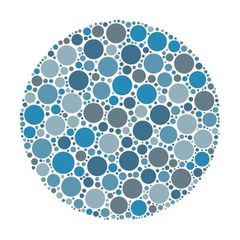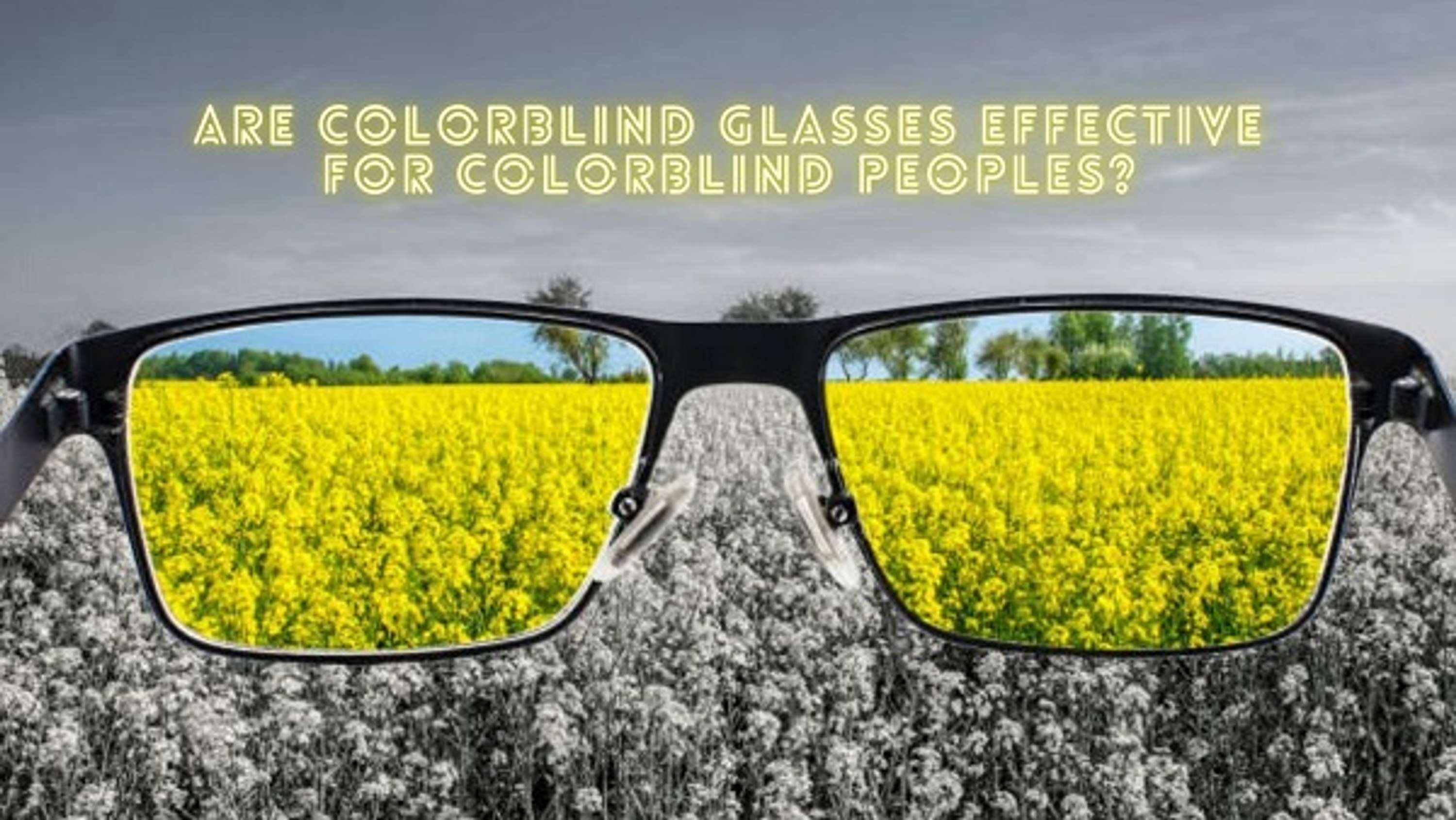Colorblind glasses are a relatively new and innovative technology that can significantly enhance color vision for people with color vision deficiency. The glasses work by filtering out specific wavelengths of light that are responsible for confusing colors in people with color blindness.
This filtering effect is achieved through the use of specialized lenses that alter the way that light enters the eye, and the result is a significant improvement in color perception.
To understand how colorblind glasses work, it's important to first understand what causes color blindness. Color vision deficiency is a genetic condition that affects the way that the cones in the eye respond to certain wavelengths of light.
There are three types of cones in the eye, each of which responds to a specific range of wavelengths: short (blue), medium (green), and long (red). People with color blindness have cones that respond differently than normal, making it difficult to distinguish between certain colors.
Colorblind glasses work by selectively filtering out the wavelengths of light that are responsible for causing confusion, while enhancing the contrast between others.
The lenses in the glasses are designed to block out specific colors, which can vary depending on the type of color blindness.
For example, people with red-green color blindness may benefit from glasses that filter out certain shades of red and green, while people with blue-yellow color blindness may benefit from glasses that filter out certain shades of blue and yellow.
When worn, colorblind glasses can provide a significant improvement in color perception, allowing wearers to see colors that were previously difficult or impossible to distinguish.
This can have a profound impact on the quality of life for people with color blindness, who may feel frustrated or isolated by their inability to see colors in the same way as others.
By enhancing color vision, colorblind glasses can improve confidence, independence, and emotional well-being for people with color blindness.
While colorblind glasses are generally effective for most types of color blindness, they may not work for all individuals and can have some minor side effects such as temporary discomfort or changes in color perception.
It is important to consult with an eye care professional to determine the most effective treatment option for each individual.
Who Can Benefit from Colorblind Glasses?
Colorblind glasses are designed specifically to address color vision deficiency, so they can be used by both children and adults who have this condition. However, it's important to note that colorblind glasses are not a substitute for a comprehensive eye exam or other vision treatments, and they may not be effective for individuals with other vision problems. Children with color vision deficiency can benefit from colorblind glasses, as they can help them distinguish colors more accurately and improve their ability to learn and interact with the world around them. However, it's important to consult with an eye care professional before using colorblind glasses, especially for young children, to ensure that there are no underlying vision problems that need to be addressed.
Individuals with other vision problems, such as nearsightedness or farsightedness, may still be able to use colorblind glasses in conjunction with their corrective lenses. However, it's important to talk to an eye care professional before using colorblind glasses to ensure that they won't interfere with any existing vision treatments.
Overall, colorblind glasses can be a useful tool for both children and adults with color vision deficiency, but it's important to consult with an eye care professional to determine the most effective treatment options for each individual.
Exploring Affordability and Insurance Coverage
Colorblind glasses can vary in price, depending on the brand, features, and technology used. On average, they can cost anywhere from a few hundred to a few thousand dollars.
However, there are some more affordable options available, such as glasses with less advanced technology or cheaper materials.
Insurance coverage for colorblind glasses can also vary depending on the insurance provider and plan. Some insurance plans may cover a portion or all of the cost of the glasses if they are deemed medically necessary.
It's important to check with your insurance provider to determine if they cover colorblind glasses and to what extent.
In addition to insurance coverage, there are also non-profit organizations that offer financial assistance for individuals who cannot afford colorblind glasses.
These organizations may provide grants or scholarships to cover some or all of the cost of the glasses.
Overall, the affordability of colorblind glasses can vary, but there are options available for individuals who need financial assistance.
It's important to explore all options and consult with an eye care professional to determine the most suitable and affordable treatment plan.
The Limitations of Colorblind Glasses that You Need to Know Before Using Them
While colorblind glasses can be a helpful tool for individuals with color vision deficiency, there are some limitations and conditions to consider before using them.
Firstly, colorblind glasses may not be effective for all types of color vision deficiency. Some individuals with severe color blindness may not experience significant improvement with the use of colorblind glasses.
It's important to consult with an eye care professional to determine the type and severity of color vision deficiency before using colorblind glasses.
Additionally, colorblind glasses may not be effective in all lighting conditions or environments. They work by enhancing the perception of certain colors, but if the lighting is too dim or too bright, the glasses may not be effective. It's important to test colorblind glasses in different lighting conditions to determine their effectiveness.
It's also important to note that colorblind glasses may not completely correct color vision deficiency, but rather enhance color perception. Individuals may still experience some difficulty distinguishing between certain colors even with the use of colorblind glasses.
Finally, colorblind glasses should not be used while driving or operating heavy machinery, as they can distort colors and affect depth perception.
The Impact of Colorblind Glasses on Color-Dependent Industries like Art, Fashion, and Beyond
Colorblind glasses can have a significant impact on industries that rely on accurate color perception, such as art or fashion. For individuals with color vision deficiency, these industries can be challenging to navigate due to difficulty distinguishing between certain colors.
With the use of colorblind glasses, individuals with color vision deficiency can enhance their ability to perceive colors accurately. This can open up opportunities for careers in these industries and improve the quality of work for individuals who are already working in them.
In the art industry, colorblind glasses can help individuals with color vision deficiency to create and appreciate art in a way that was not possible before. They can help artists to better distinguish between colors and make more informed choices when selecting colors for their artwork. Additionally, art museums and galleries can utilize colorblind glasses to make exhibits more accessible for visitors with color vision deficiency.
In the fashion industry, colorblind glasses can help individuals with color vision deficiency to more accurately match colors and create color schemes. This can lead to more inclusive and diverse fashion designs, as individuals with color vision deficiency can now fully participate in the industry.
Overall, colorblind glasses have the potential to improve accessibility and inclusivity in industries that rely on accurate color perception, allowing individuals with color vision deficiency to fully participate and contribute to these industries.
Colorblind Glasses vs Other Assistive Technologies
Colorblind glasses are a specific type of assistive technology designed to help individuals with color vision deficiency. While there are other assistive technologies available for individuals with visual impairments, such as screen readers and magnifying devices, colorblind glasses have their own unique benefits.
Compared to other assistive technologies, colorblind glasses are relatively simple and easy to use. They do not require any special training or expertise, and they can be worn like regular glasses. Additionally, colorblind glasses can provide an immediate improvement in color perception, allowing individuals to see colors more accurately in real-time.
However, it is important to note that colorblind glasses are not a cure for color vision deficiency and may not work for everyone. They are designed to enhance color perception, but they may not fully correct color vision deficiencies. Additionally, colorblind glasses are not effective for individuals with total color blindness (achromatopsia).
In contrast, other assistive technologies such as screen readers and magnifying devices are designed to help individuals with a range of visual impairments, including low vision and blindness. These technologies may require more specialized training and can be more complex to use. However, they can provide a wider range of benefits beyond color perception, such as increased accessibility to digital content and improved reading abilities.
Colorblind glasses are a unique and effective tool for enhancing color perception for individuals with color vision deficiency.
While they may not work for everyone and are limited to addressing color perception, they provide a simple and immediate solution to a common problem.
Other assistive technologies, while more complex, can provide a wider range of benefits for individuals with various types of visual impairments.
If you've found this post to be a valuable resource, why not spread the knowledge and share it with your friends and family on WhatsApp and Facebook? 

